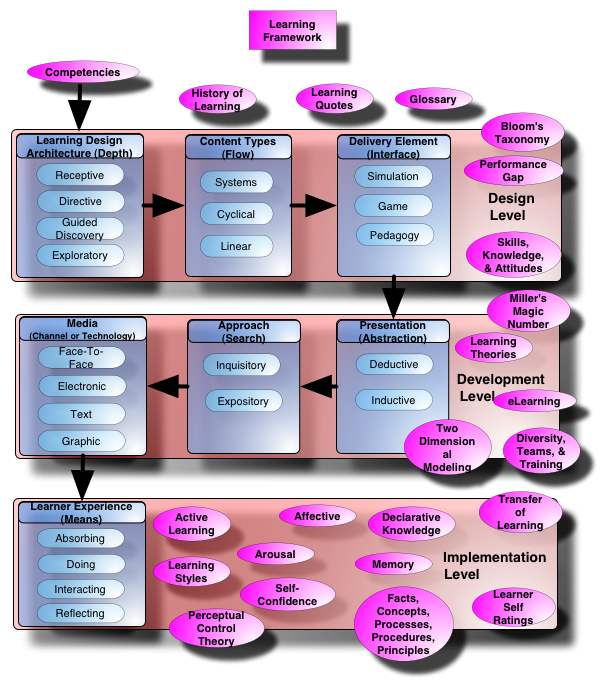Rapid Instructional Design (RID)
Dave Meier’s (2000) Rapid Instructional Design (RID) model incorporates accelerated learning techniques that strives to design the learning environment with more practice, feedback, and experience rather than presentations. It is based on four phases, Preparation, Presentation, Practice, Performance:
Preparation (arousing of interest)
- learner goals and benefit statements
- raise the learners' curiosity
- remove learner barriers
Presentation (the initial encounter new knowledge and/or skills)
- real word phenomenon
- interactive presentations
- appeal to all learning styles
- discovery activities
- problem solving exercises
Practice (the integration new knowledge and/or skills)
- hands on trial/feedback/reflection/retrial
- learning games
- individual reflection and articulation
- skill building practice exercises
Performance (the application of new knowledge and/or skills to real work situations).
- apply the knowledge and/skills on the job
- build support systems for reinforcing learning on the job
- reward the successful use of newly learned skills
- provide time to integrate and apply the new skills
Reference
Meier, D. (2000). The Accelerated Learning Handbook. New York: McGraw-Hill.



